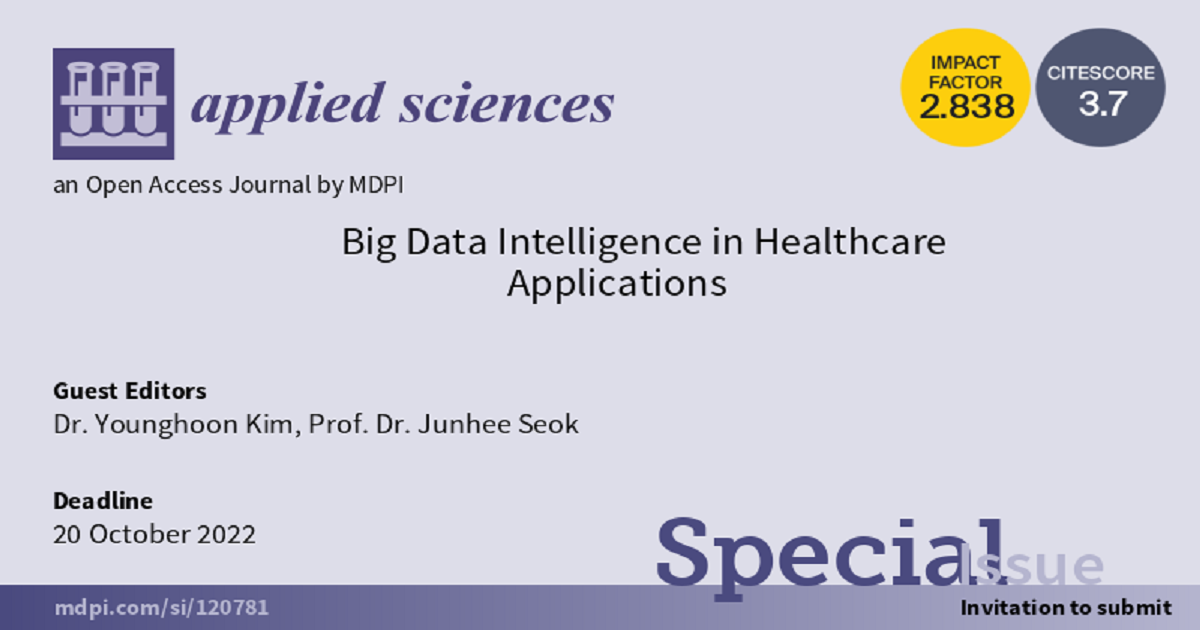Big Data Intelligence in Healthcare Applications
A special issue of Applied Sciences (ISSN 2076-3417). This special issue belongs to the section "Computing and Artificial Intelligence".
Deadline for manuscript submissions: closed (20 October 2022) | Viewed by 7073

Special Issue Editors
Interests: data mining with deep learning; information retrievals on big data; text mining; recommendation systems
Special Issue Information
Dear Colleagues,
In the last two decades, big data has been extensively studied in various sectors of different industries. In healthcare, big data from various sources, including medical records of patients such as CT, fMRI images, EEG signals and diagnosis recorded in medical centers, and even health monitoring devices harnessing the Internet of Things, have been generated and analyzed with an aim to exploit their great potential hidden within.
In this Special Issue, we solicit original articles from a wide variety of interdisciplinary perspectives concerning the theory and application of big data management and analytics in healthcare. The list of topics includes (but is not limited to): the application of big data technologies in bio- and clinical medicine, healthcare IoT, machine learning-based decision support, data analytics and mining, and big data management in healthcare. Furthermore, we would like to place emphasis on the practical aspect of the study. Hence, the inclusion of a clinical assessment of the usefulness and potential impact of the submitted work is strongly recommended.
Dr. Younghoon Kim
Prof. Dr. Junhee Seok
Guest Editors
Manuscript Submission Information
Manuscripts should be submitted online at www.mdpi.com by registering and logging in to this website. Once you are registered, click here to go to the submission form. Manuscripts can be submitted until the deadline. All submissions that pass pre-check are peer-reviewed. Accepted papers will be published continuously in the journal (as soon as accepted) and will be listed together on the special issue website. Research articles, review articles as well as short communications are invited. For planned papers, a title and short abstract (about 100 words) can be sent to the Editorial Office for announcement on this website.
Submitted manuscripts should not have been published previously, nor be under consideration for publication elsewhere (except conference proceedings papers). All manuscripts are thoroughly refereed through a single-blind peer-review process. A guide for authors and other relevant information for submission of manuscripts is available on the Instructions for Authors page. Applied Sciences is an international peer-reviewed open access semimonthly journal published by MDPI.
Please visit the Instructions for Authors page before submitting a manuscript. The Article Processing Charge (APC) for publication in this open access journal is 2400 CHF (Swiss Francs). Submitted papers should be well formatted and use good English. Authors may use MDPI's English editing service prior to publication or during author revisions.
Keywords
- big data analytics and data mining in healthcare
- machine learning and deep learning algorithms for healthcare
- big data management for electronic health records
- big data for cost minimization in healthcare delivery
- big data-enabled user studies in decision making in healthcare






